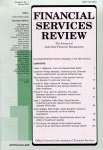An Analysis of the Tradeoff Between Tax Deferred Earnings in IRAs and Preferential Capital Gains
DOI:
https://doi.org/10.1016/S1057-0810(97)90002-0Abstract
This paper extends prior research in evaluating the decision of whether to invest in a mutualfund either outright or through one of the three available IRAs: the deductible IRA, the Roth IRA, and the nondeductible IRA. We provide mathematical models for after-tax accumulations for each of the investments that are a function of return, the percentage of the return currently taxable to the investor, the time horizon of the invest- ment, the capital gain tax rate, and the ordinary income tax rate. The Roth IRA and the deductible IRA always dominate investments in the nondeductible IRA or through out- right investment. However, in comparing the nondeductible IRA and outright investments, the outcome is dependent on the investment goals of the mutualfind and whether it generates substantial dividend distributions or capital gain distributions. Mutualfunds with small dividend and capital gain distributions may accumulate larger amounts if held outright while mutualfunds that pay substantial dividends or make sub- stantial capital gain distributions accumulate larger after-tax amounts when invested in a nondeductible IRA.
Downloads
Published
How to Cite
Issue
Section
License
Copyright (c) 1997 JAI Press Inc.

This work is licensed under a Creative Commons Attribution-NonCommercial 4.0 International License.
Author(s) retain copyright and grant the Journal right of first publication with the work simultaneously licensed under a Creative Commons Attribution-NonCommercial 4.0 International License that allows to share the work with an acknowledgment of the work's authorship and initial publication in this Journal.
This license allows the author to remix, tweak, and build upon the original work non-commercially. The new work(s) must be non-commercial and acknowledge the original work.


